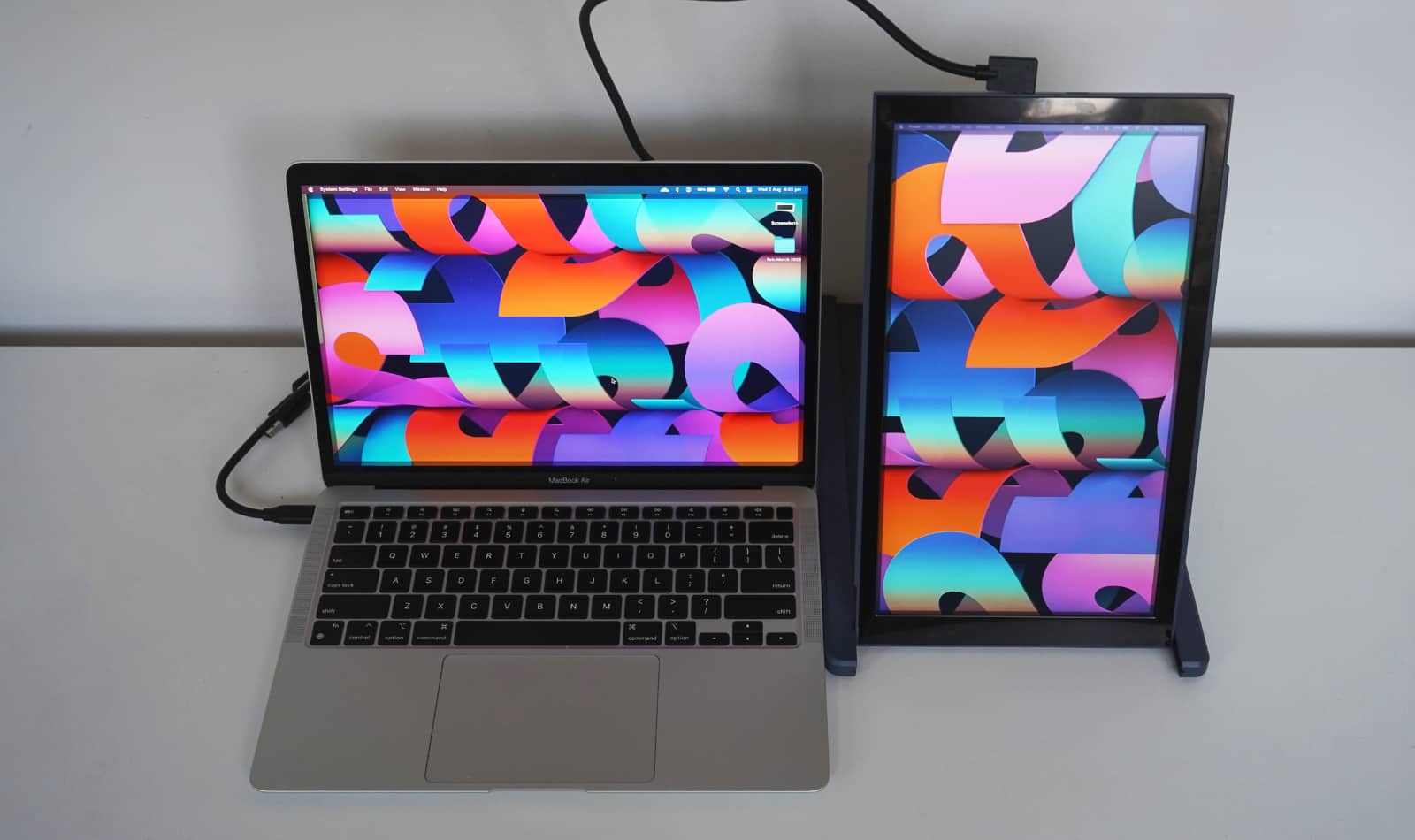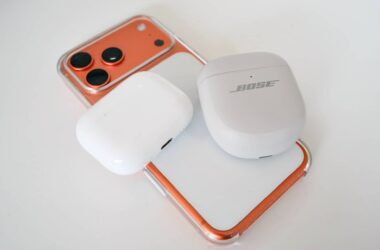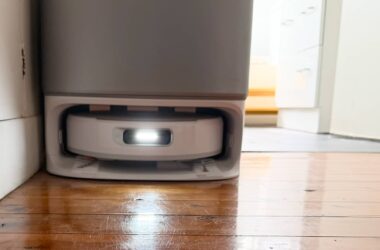Quick review
The good
The not-so-good
Working from may well be the norm, but living without the second screen shouldn’t be. The Mobile Pixels Duex Lite could just offer a fix, provided your don’t mind defacing your laptop slightly.
Have you ever felt that one laptop screen just wasn’t enough? That in this day and age of working between an actual workplace and home post-pandemic, you need a little more room either at a desk or working anywhere else?
You’re not alone. Laptop makers are answering the call with improvements in screen sizes, packing in more pixels to a 13 and 15 inch laptop by slimming down on bezels, but that more just increases the screen size, not so much real estate.
To improve your actual screen real estate, you need to do what you did when work from home became a thing we all did, and add a second screen. It’s either that or just getting a massive ultra-wide screen, and since that last one will ruin the very nature that is portability, it’s likely the option of a second screen.
So how do you do it? How do you bring a screen to go in a laptop where only one screen is found, typically hinged to keyboard.
What is the Duex Lite?
Mobile Pixels has a solution in the form of a portable screen, one of three the company has released in Australia. The sizes range from 12.5 inches to 14.1 inches in the Duex range launched in Australia, but there are also two screens in a Trio variety available.
We’re reviewing the Duex Lite, a 12.5 inch screen backed in plastic and mounted to a laptop by way of magnetic circles with 3M adhesive on one side.
That screen simply needs a corded connection back to your computer to extend your display, no different to how using any other monitor works.
Plug the cord in and set your display arrangement as you want, opting either for mirror or an extension, and either in a standard horizontal layout or even a vertical one, since the Duex supports that.
What does it do?
The idea is simple enough: mount a screen to the back of your laptop, or if you like, carry it alongside and set up next to it. It’s a way to get a portable computer working with two screens, because once you go two, you can’t go back.
However it may not be quite the same experience as the screen on your laptop. Laptop sizes can vary, and even though the M1 MacBook Air is a 13 inch computer, the 12.5 inch display of the Duex Lite is technically larger than the lid of the 13 inch Air.
Still, the idea makes sense, granting an extra screen to your laptop with a little adhesive, a cord, and of course that extra screen, which runs at 60Hz on 1920×1080.
Does it do the job?
Setting the 12.5 inch Duex Lite on a MacBook was rather easy, though you learn quickly that the magnetic approach Mobile Pixels has taken has two flaws: it doesn’t suit every laptop and it can look a little clunky.
The idea is easy enough: align magnetic circles with 3M adhesive on the back on the lid of your laptop, and once you think you have the whole thing in the right spot, peel off the adhesive and lay it down. Your magnetic dots will stick and sit in some spaces cut out to have them magnetically hold the screen. That’s easy enough.
When the Duex Lite is mounted to your computer, you can slide out the screen, using its hinge to angle it towards you. It still needs a connection, so if your computer has a Type C connection — and most have for several years — use the included Type C cable to plug that back into your computer, switching on the display and passing through data. You can quickly set up the arrangement of the display afterwards. Easy.
That’ll set the Duex as a regular landscape look screen, but the design of the Duex Lite is such that you can also make it stand in portrait, giving you a 9:16 look for tall displays, handy if you’re looking at a lot of data, stocks, or just writing a lot and want to see everything.
Weirdly, you can’t stand it up in landscape without purchasing an optional extra stand from Mobile Pixels, adding $39 to the whole thing and making it stand up next to your laptop.
But you can flip the screen all the way around to the back, kind of giving you a way to mirror your screen if you were doing a presentation in a small meeting room. That’s an interesting use case for sure.
What does it need?
We’re just not sure if the design is great. It definitely works, it just comes off a touch clunky.
The plastic holding it all together is thin, but it also doesn’t remotely look like any other laptop design out there, except for maybe some inexpensive notebooks we’ve seen prior.
And even if you get over the meh of the design independently, once you add it to your machine, it almost looks like some weird flat box has been bolted on to your otherwise perfectly great computer.
The result isn’t necessarily what we’d call attractive, and it can weigh down your laptop lid in the process.
On a desk, you may not notice it flopping or falling backwards, but on your lap, it’s a definite vibe. You’re definitely adding noticeable thickness and weight, changing not only how the laptop feels, but how it looks in your backpack and such.
There’s also the matter of the screen itself which is spec’d as a 1920×1080 60Hz screen, and even offers controls to let you tweak the brightness, contrast, and backlighting, but never feels beautifully sharp.
We actually found lowering the resolution from 1080p to 720p made the Duex Lite that much easier on the eyes, though it could have easily been an issue with size. Overall, it just doesn’t seem as sharp a screen as you might like, and that’s not the only issue.
Is it worth your money?
At $499, the Duex Lite seems like it’s a little exy for what it offers, especially since you can typically do the same sort of thing with an iPad, which has more purposes than just a screen.
If you have a Mac, Apple’s Sidecar extends the iPad to work as an extra screen, provided you’re logged in under the same iCloud account. And if you have a PC, you can also look to a Samsung Galaxy Tab for second display streaming too.
There are also a few apps available, though typically rely on monthly and yearly costs, such as Duet Air, which is basically $60 USD per year for a way to stream to either Android or iOS/iPadOS from Mac or Windows.
Given an iPad is around one hundred more at the cheapest, it’s hard to see the immediately value, though we can definitely see the business case, making the desktop that much more portable.
If you struggle bringing your WFH environment back into the real world of hot-desking and portability, the Duex Lite quickly adds that back in, and you can even snap it off in a cinch.
Overall, though, we’re a little stuck on the price simply because it’s also not far from the 13 inch competition of its obvious competitor in Espresso, which offers a nicer looking and better designed portable display.
Yay or nay?
The one thing that makes Mobile Pixels’ Duex Lite more interesting could come down to the ease of use: you snap this on with magnets and it goes everywhere.
This is desktop portability encapsulated.
The downside is your laptop tends to look a little different in the process, removing the often sleek metallic look many of our lappies have and replacing it with a coloured plastic exterior just to house the screen. Going from a sleek MacBook lid to the blue plastic Duex Lite looked downright clunky as we brought it around, but it does snap off when you need it to, because magnets rule.
If you’re ok with the look shift and just need your second screen to go, the Duex Lite is worth a look. But next time, we’re going to hope Mobile Pixels steps up the design or leans back on the price. Maybe both.






